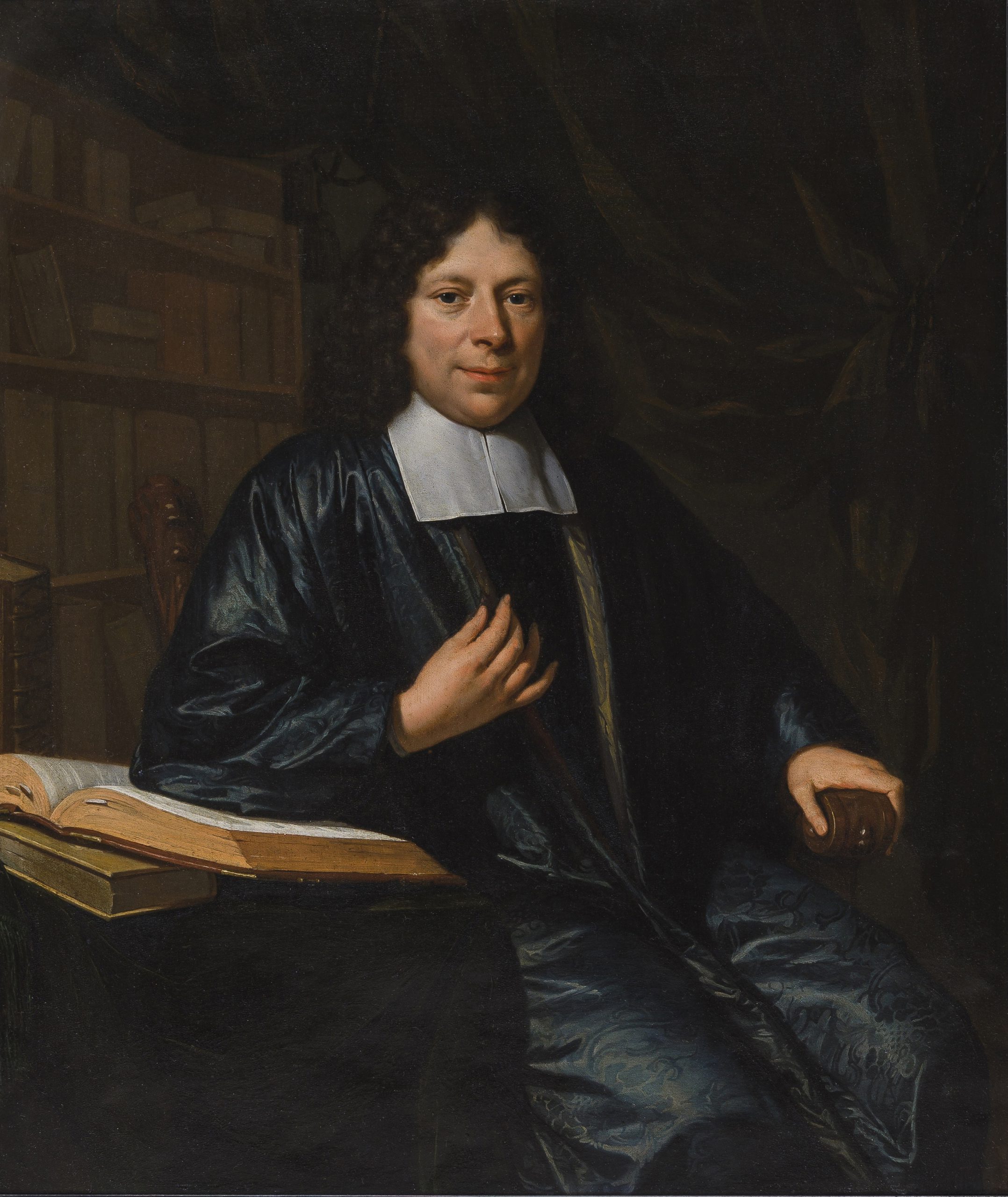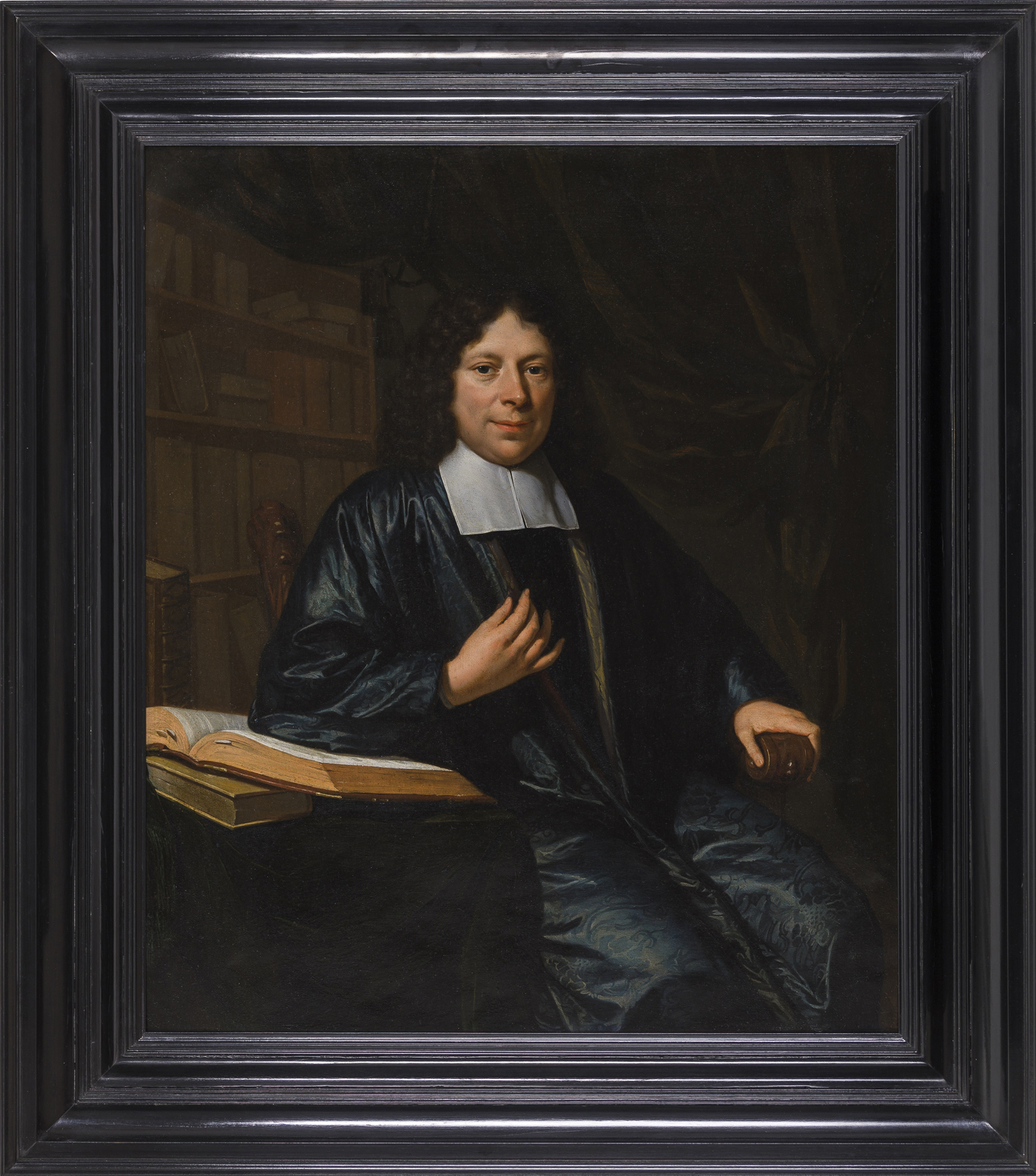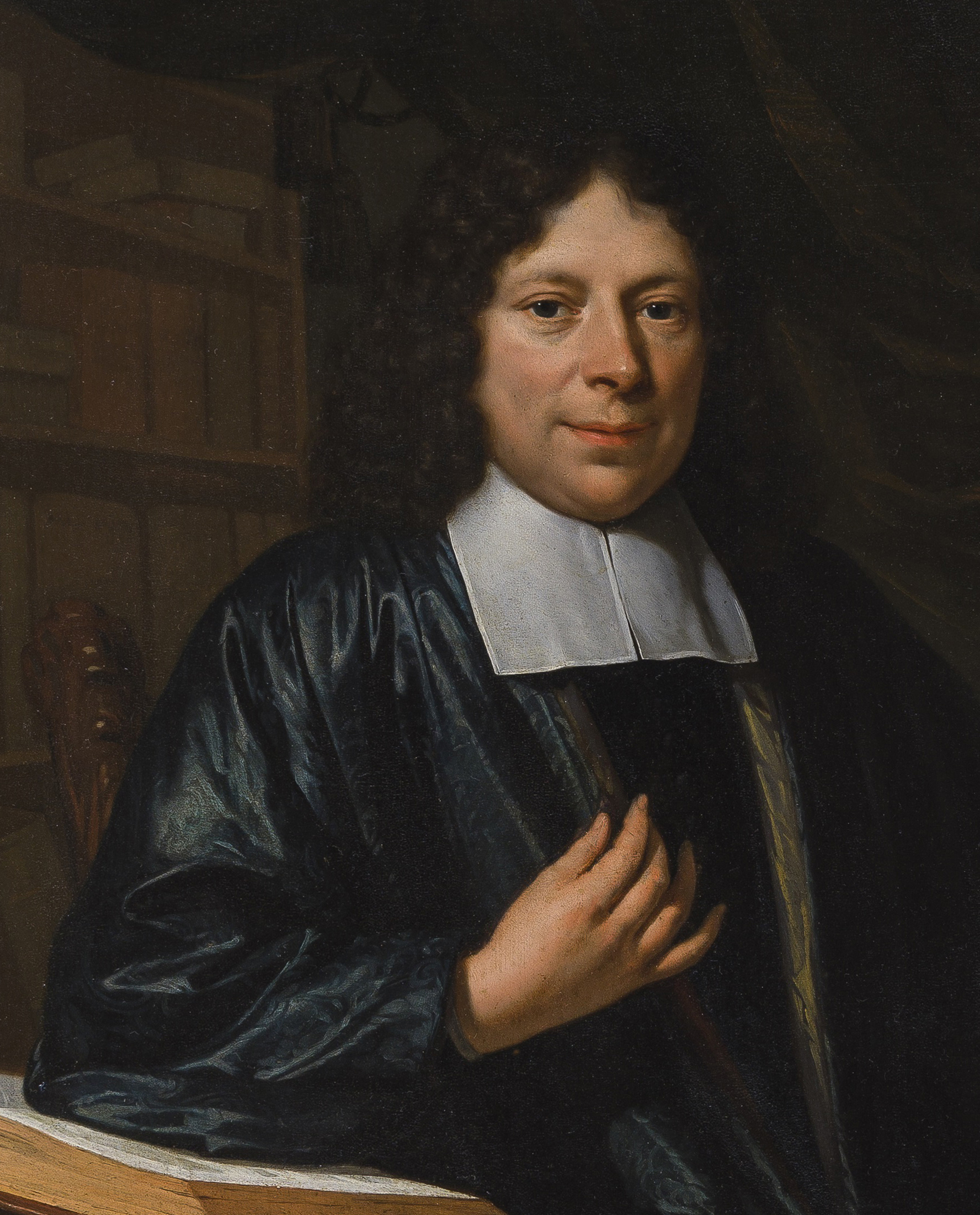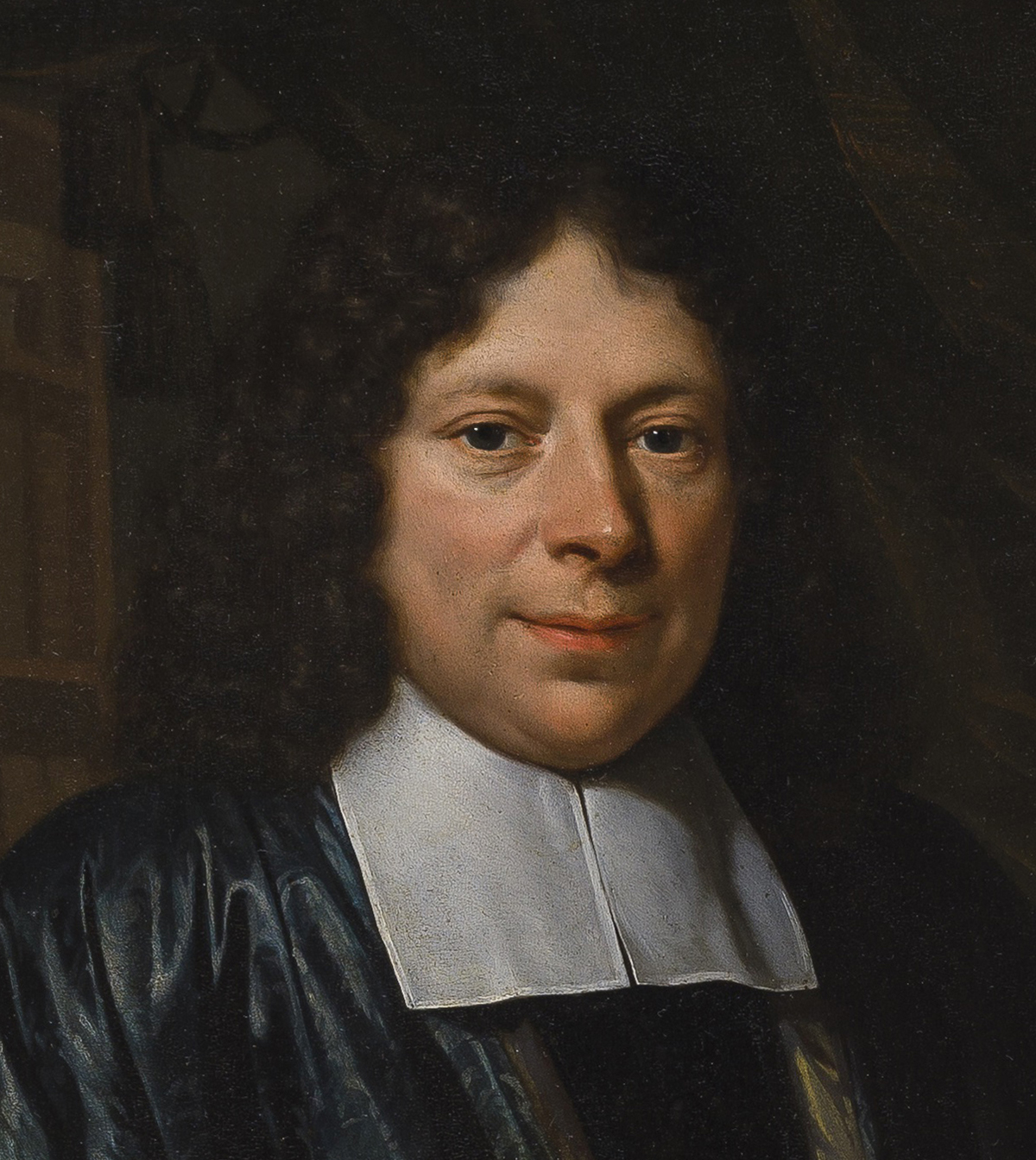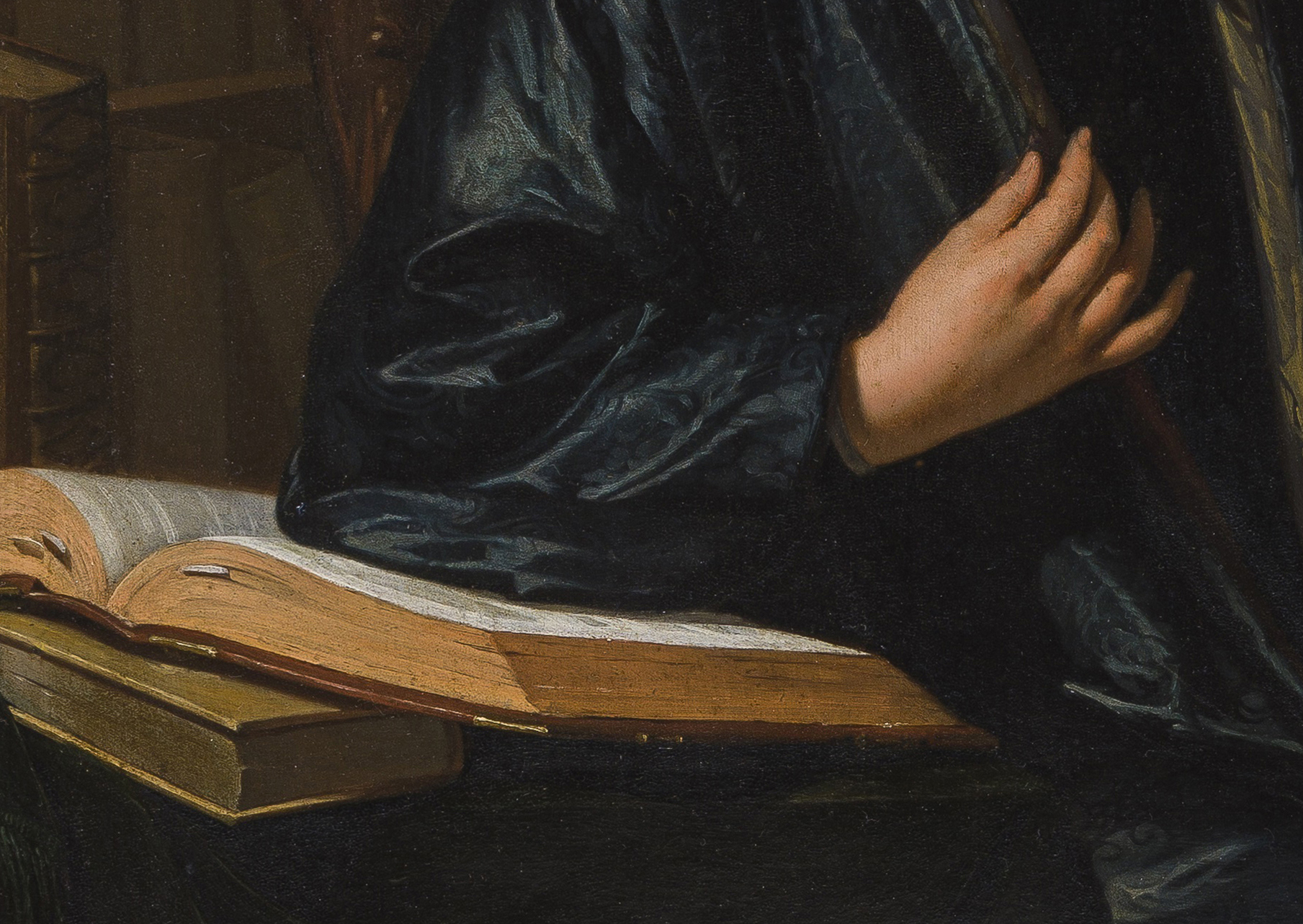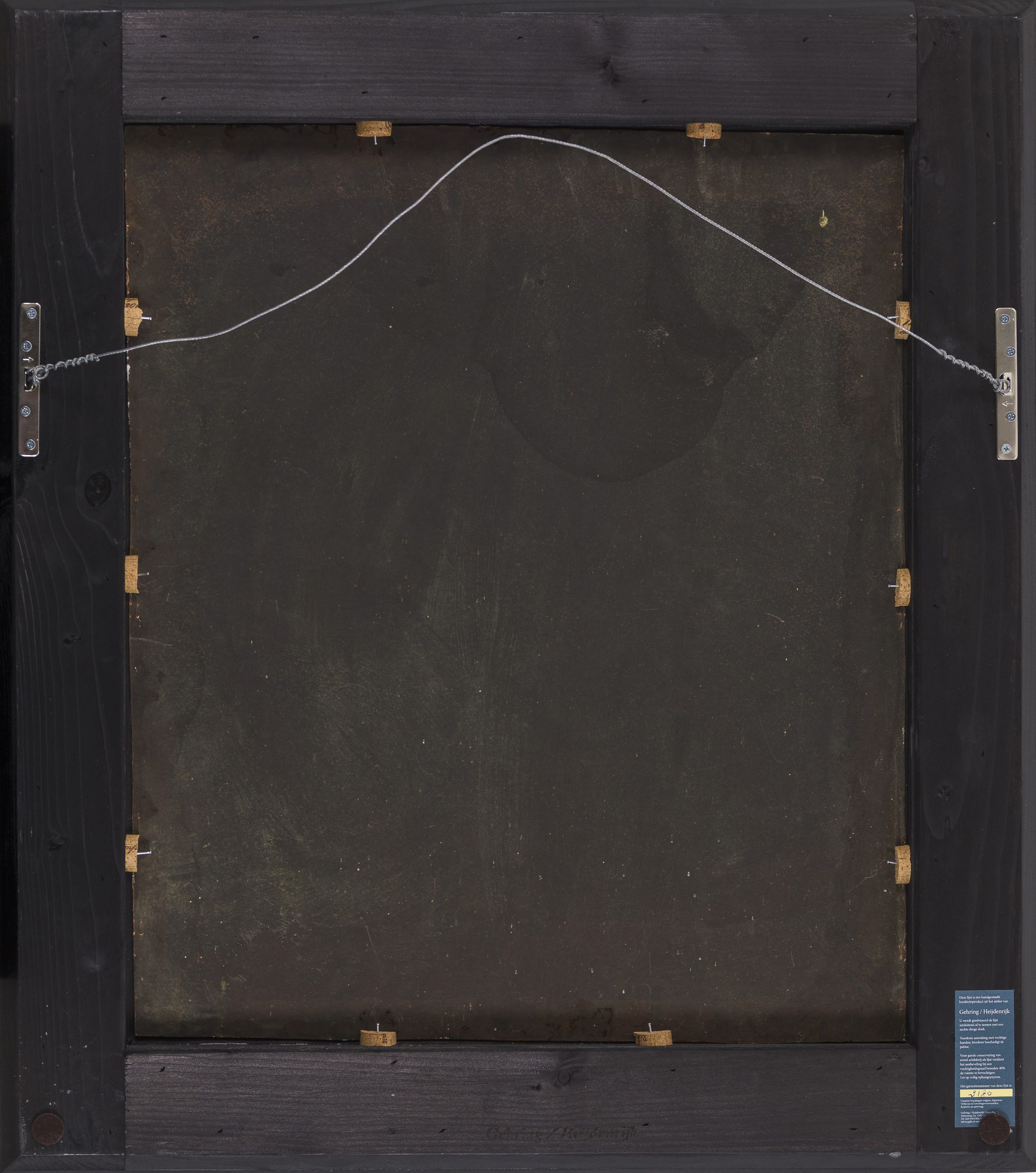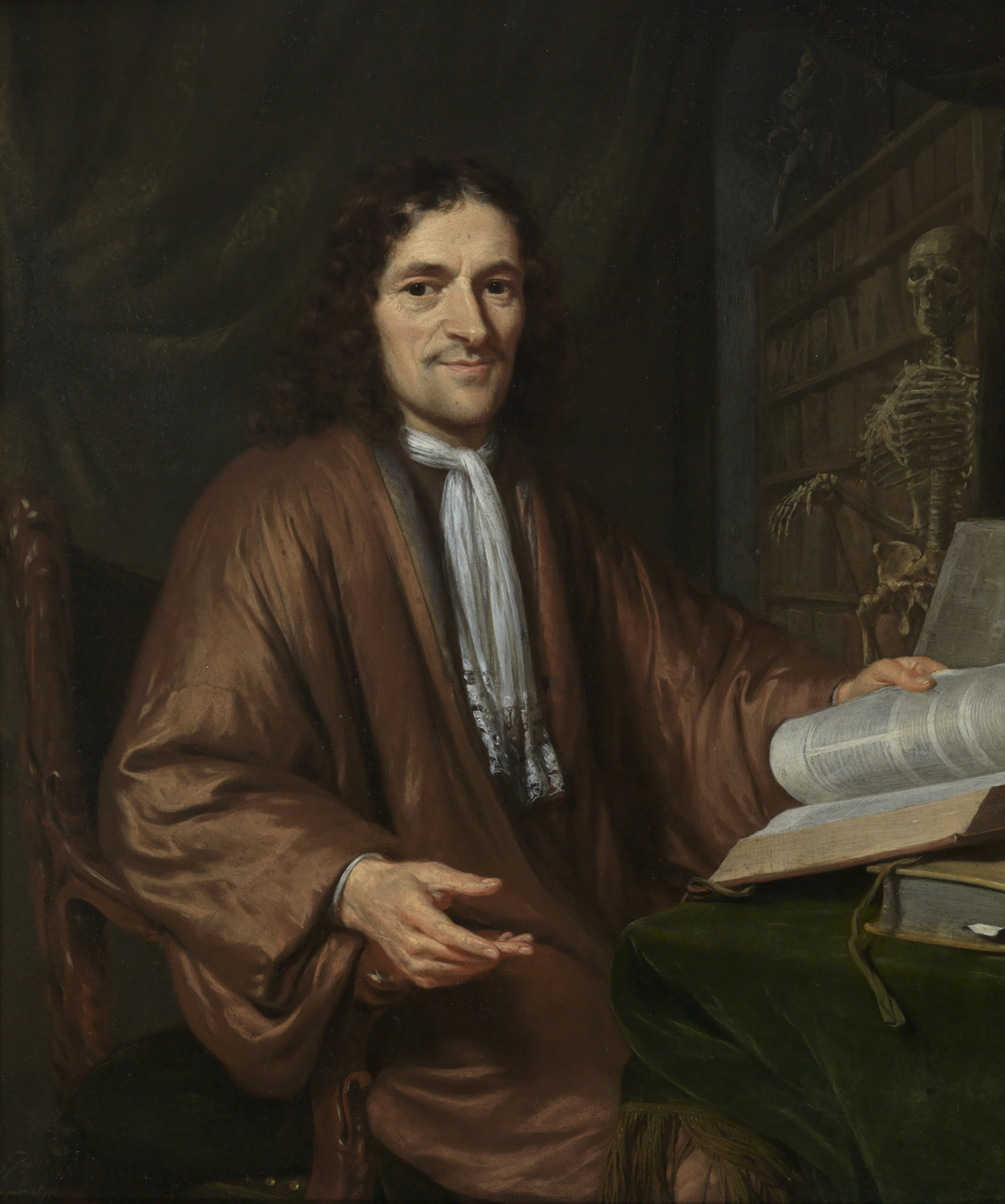JAN VERKOLJE (Amsterdam 1650 – 1693 Delft)
Jan Verkolje (Amsterdam 1650 – 1693 Delft)
Portrait of a Gentleman in his Library
Oil on copper, 53.5 x 46 cm (21.1 x 18.1 inch); presented in a modern ebonised frame of 17th-century model
Provenance
Private collection, France
***
Jan was born in Amsterdam in 1650 as the son of a locksmith, Benjamin Jacobsz Verkolje, and his wife Marritie Teunis; he was baptised in the Nieuwezijds Kapel on 9th February.1 The artists’ biographer Arnold Houbraken recorded in his Groote schouburgh of 1718-21 that Verkolje was hurt by a friend while playing “prikjes” or darts as a child, and as the injury on his ankle did not heal well he was bedridden for years, during which time he started making drawings after engravings – according to Houbraken, the wound was eventually cured by the physician, architect and inventor Francesco Giuseppe Borri (1626–1695), who lived in Amsterdam during the 1660s.2 He received additional education by the painters Jan Gerritsz van Bronckhorst and Jan Andrea Lievens (1644–1680), the son of Rembrandt’s associate Jan Lievens.
In the “rampjaar” (disaster year) 1672, Verkolje moved from Amsterdam to Delft, where he married Judith Voorheul and was a member of the Mennonite congregation He became a member of the guild of St Luke in the following year, and served as its Dean between 1678 and 1688. Verkolje’s pupils included his own sons, Nicolaes Verkolje and Jan II, and furthermore Albertus van der Burch, Willem Verschuring and Thomas van der Wilt. He sadly died at the young age of 43, when he was at the height of his artistic ability, and was buried in the Oude Kerk in Delft.
Verkolje was active as a painter, draughtsman and engraver – according to Houbraken, he discovered how to use the novel technique of mezzotint by himself. He painted refined genre scenes but was also highly valued as a portrait painter, but in Delft and in courtly circles in The Hague, but also further afield. He painted portraits of Hortense Mancini, Duchess of Mazarin, King James II of England, William III of Orange and Mary Stuart; in Delft, his clients included burgomaster and historian Dirk van Bleiswijk, the painter Pieter Jansz van Asch, and the celebrated scientist Antonie van Leeuwenhoek.
Our painting is immaculately preserved, in near-perfect condition, painted on a large copper panel, a very smooth and durable support that allowed painters to work with particular fine detail. The gentleman, whose identity has been lost over time, is shown were a “Japonsche rock”, of blue patterned silk and lined with yellow silk, a garment that was frequently warn indoors during the period, to protect from the cold. The sitter looks upon the viewer with a confident smile, his hand in an elegant position. He is seated in a richly carved chair at a cloth-covered table, upon which lie some casually arranged books, presumably taken from the bookcase behind him, a prized and valued possession that is proudly featured in the painting, and normally shielded from light and dust by the curtain which is drawn up at the right. Although his identity is no longer known, he is likely to have been a member of Delft’s cultural elite. It can be compared to the portrait of of the Delft town surgeon Dr Cornelis ‘s-Gravesande, preserved in the Prinsenhof Museum in Delft (fig.).3 In terms of composition it is also comparable to Verkolje’s mezzotint portrait of Hugo van der Helst in his library,4 for which several drawings with various compositional ideas are preserved in the Rijksprentenkabinet in Amsterdam, which illustrate Verkolje’s working processes, and compositional ideas which he presumably discussed with his clients.
Pictures by Verkolje are preserved in the Rijksmuseum in Amsterdam, the Museum Prinsenhof in Delft, the Frans Hals Museum in Haarlem, the National Portrait Gallery in London and the Fraeylemaborg in Slochteren.
The authorship by Verkolje was confirmed by Dr Fred Meijer, who dates this work to the second half of the 1680s.5
1. For Verkolje, see C.W. Fock, ‘Het portret van de kinderen van Pieter Teding van Berkhout door Jan Verkolje’, in: E. Buijsen, Ch. Dumas, V. Manuth (ed.), Face Book. Studies on Dutch and Flemish Portraiture of the 16th-18th Centuries. Liber Amicorum presented to Rudolf E.O. Ekkart on the occasion of his 65th Birthday, Leiden 2012, pp. 443-450 and Saur Allgemeines Künstlerlexikon: die bildenden Künstler aller Zeiten und Völker, Munich 1992-, vol. 112 (2021), p. 511.
2. Arnold Houbraken, De groote schouburgh der Nederlantsche konstschilders en schilderessen (…), The Hague 1718-21, vol III, pp. 282-86.
3. Oil on copper, inv. no. PDS 157.
4. Mezzotint, plate impression 281 x 204 mm; Rijksprentenkabinet, Amsterdam, inv. no. RP-P-1911-182.
5. Pencil, pen and brown ink, grey wash, 214 x 176 mm, inv. no. RP-T-00-293 and pencil, pen and brown ink, grey wash, 216 x 185 mm, inv. no. RP-T-00-291.
5. Email correspondendence, 22 February 2022.
